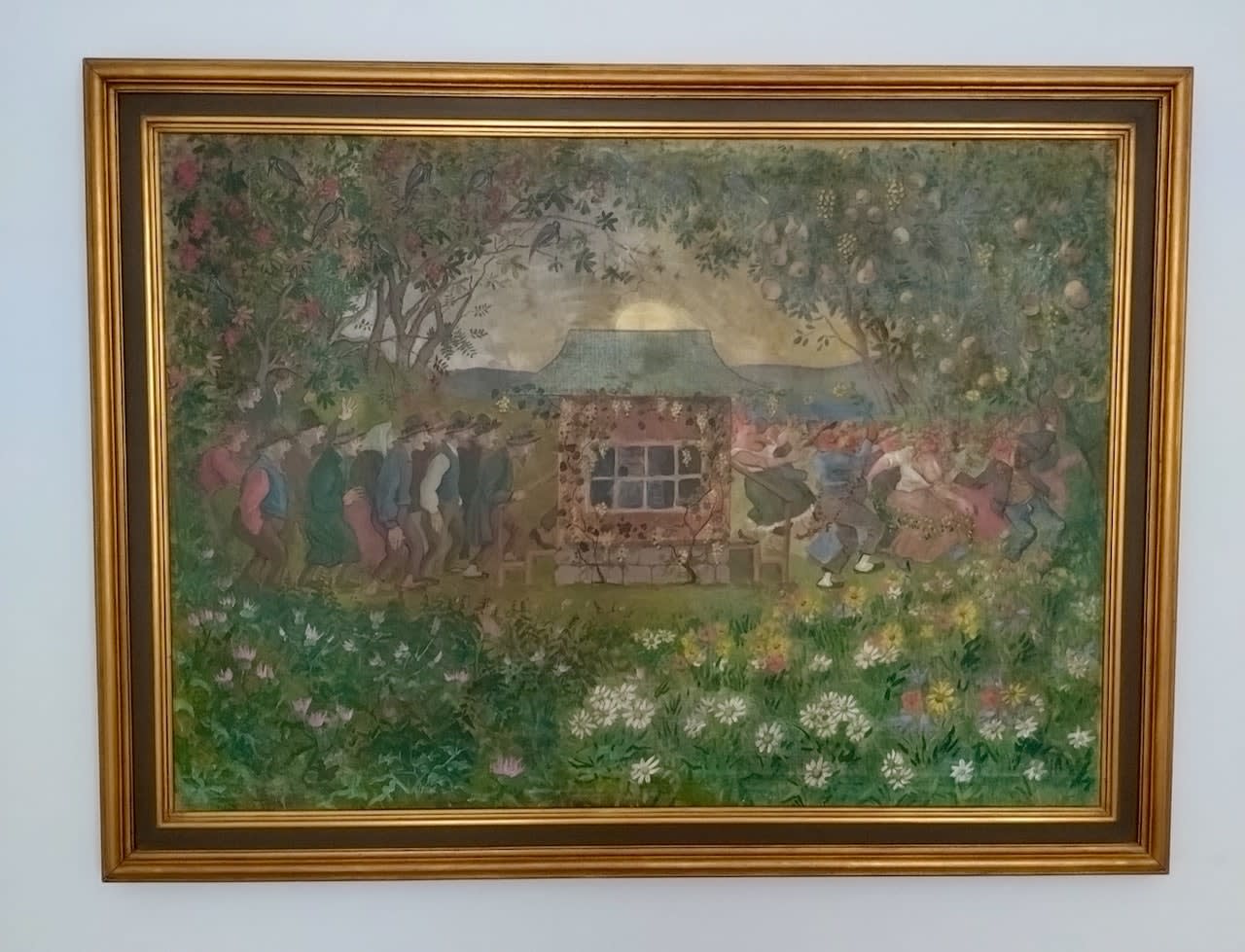Ivar Arosenius Swedish, 1878-1909
The Mill (Kvarnen), 1906
Oil and tempera on canvas
89 x 125 cm
35 x 49 1/4 in
35 x 49 1/4 in
Clase Fine Art
The Mill depicts a queue of downtrodden characters making their way into a summer pavilion. They emerge on the other side reborn: youthful, joyous, and inebriated. The landscape, wildlife and...
The Mill depicts a queue of downtrodden characters making their way into a summer pavilion. They emerge on the other side reborn: youthful, joyous, and inebriated.
The landscape, wildlife and flowers are all bright and positive on the right-hand side, while what has been left behind is dull, grey and dying. As so often, Arosenius hints at the supposed healing powers of the consumption of alcohol, which he had been told was a scientific fact.
When Arosenius first presented the painting to Mr. Ragnar Hamberg and his wife Elsa, she disliked the long tongues hanging out of the miserable creatures queueing to enter the pavilion. The artist obliged and altered the painting, but on close inspection the pentimenti are clearly visible. The artist's strong lines are impossible to eradicate.
The landscape, wildlife and flowers are all bright and positive on the right-hand side, while what has been left behind is dull, grey and dying. As so often, Arosenius hints at the supposed healing powers of the consumption of alcohol, which he had been told was a scientific fact.
When Arosenius first presented the painting to Mr. Ragnar Hamberg and his wife Elsa, she disliked the long tongues hanging out of the miserable creatures queueing to enter the pavilion. The artist obliged and altered the painting, but on close inspection the pentimenti are clearly visible. The artist's strong lines are impossible to eradicate.
Provenance
Commissioned from the artist by Ragnar and Elsa Hamberg;Thence by descent in the family
Exhibitions
Gallery Färg och Form, Stockholm, “Ivar Arosenius (1878-1909)”, May 1944;Gothenburg Museum of Art, “Ivar Arosenius, the collection of Ragnar and Elsa Hamberg”, 1949;
Borås Museum of Art, “Ivar Arosenius”, 1988-89;
Gothenburg Museum of Art, “Ivar Arosenius”, 2009;
Prins Eugens Waldemarsudde, Stockholm, “Ivar Arosenius”, 2010
Literature
Asplund, 1928, pp 188-189, illustration no 23 (as Kvarnen);Sandström 1959, pp 133-134, 144, 169 & 261;
Fredlund, 2009, p 200, cat no 19 (as Bacchi Kvarn)




